Nap transitions are always going to be a real doozy, but this one is particularly tough. There is rarely a time when a child will perfectly execute dropping a nap. In order to make this transition as easy as possible, it is important to consider your child’s readiness to drop a nap. If they aren’t developmentally ready to drop a nap, then the transition isn’t going to go well, no matter what you do. If you’ve found yourself reading this post because you are trying to figure out the best way to make this transition, then I am going to encourage you to take a few minutes to first read this post on dropping naps.
If you feel like your child is displaying actual signs of readiness to make this transition and you haven’t made this decision solely based on your child’s age, then let’s proceed!
The 2-to-1 nap transition is always the hardest one because there is a BIG difference between a 2-3 hour wake window to a 5-6 hour wake window. There are really 2 effective ways to make this transition and I’m breaking them both down below:
1. WEANING THE NAP


The first option is to wean the nap. This is definitely the more slow and steady approach. It slowly conditions your child to adjust to a longer wake window. To properly wean to one nap, here’s what you do: every 2-3 days you will make your child’s morning nap 10-15 minutes shorter, while simultaneously moving your afternoon nap up by 10-15 minutes. You will shorten the first nap and move the second nap every 2-3 days until the morning nap is essentially gone and the afternoon nap is falling where your one nap will ideally begin.
Confused? I don’t blame you.
Example
Day 1:
Nap 1: 10:00 – 11:30am
Nap 2: 2:00 – 3:30pm
Day 3:
Nap 1: 10:00 – 11:15am
Nap 2: 1:45 – 3:15pm
Day 6:
Nap 1: 10:00 – 11:00am
Nap 2: 1:30 – 3:00pm
Day 9:
Nap 1: 10:00 – 10:45am
Nap 2: 1:15 – 2:45pm
Day 12:
Nap 1: 10:00 – 10:30am
Nap 2: 1:00 – 2:30pm
Day 15:
Nap 1: 12:00 – 3:00pm
As you can see, this is a lengthy process. I recommend the weaning method if you have the time to dedicate to weaning the nap, or your child does not do well with change. Remember, this is just an example. It is by no means the way you have to do it. Maybe your child can tolerate adjustments in 30-minute increments. Maybe they only need a day or two to adjust to change. You can make this process as fast or as slow as your family is able to tolerate.
2. DROPPING THE NAP COLD TURKEY


This method is a little more cut and dry. It is exactly what it sounds like. You pick a day on the calendar, you commit to only offering one nap and you never look back. If only it were that simple.
Surprisingly, and I don’t say this often, but this usually works best if you have a calendar full of events/ activities. Going on vacation, a weekend full of birthday parties, starting a music class on Saturday mornings at 10am – perfect time to make the 2-to-1 nap transition. Anything that will help distract your child from the long wake window is going to work to your advantage in this situation.
If you are choosing to cut the nap cold turkey, then I usually recommend making the transition when you have a couple of days to give everyone a little extra grace. There is no way to say it nicely – your child is going to be cranky.
Our Personal Experience
Genevieve is a daycare kid and we didn’t exactly have a half of a month to prioritize slowly making this transition, so we cut to one nap cold turkey because that is what worked best for our family. We called up some friends (ones that already had a child with a 1 nap/ day schedule) the week before we intended to make this transition and asked if they wanted to get brunch with us on Saturday morning.
Our plan worked! Genevieve was relatively content until about 11:30am when she started to fade. We threw her in the car, and I very distinctly remember rolling down the windows and cranking the music because we were genuinely concerned that she might fall asleep during the 6-minute drive home (and we all know what happens when kids take a 10-minute car nap – it somehow equals a 2 hour nap in the crib and throws off your whole day!). We got her down by 11:45am and she was asleep immediately. I wish I could say the rest was history, but it wasn’t that easy, which leads me to my next point.
HOW LONG WILL THIS NAP TRANSITION TAKE
(once you’ve arrived at the 1 nap/day schedule)
Unfortunately, a long time. I usually prep my clients for at least a 1-2 week transition period. Our bodies weren’t designed to sleep during the day. The daylight inhibits the body’s production of melatonin, which makes calming down for sleep a challenge. That is why naps and nap transitions are always so hard.
Unlike sleep training at night, where you might feel like you are seeing instantaneous results, you’re going to have to tough it out with nap transitions. When it feels like it still isn’t working… keep going. I promise it is going to get better.
WHAT TO EXPECT DURING THIS NAP TRANSITION
Like I said earlier, your child is going to be cranky during this nap transition. They are being asked to stay awake for a significantly longer period of time.
What you may be expecting (which I won’t lie, is what I was expecting it too) is that your child will combine their 2 naps into one mega nap. Well, I hate to break it to you, but that’s not what you are going to get. Not for the first few weeks at least. You should expect for your child to sleep the duration of one of their normal naps, so about 1-2 hours.
Combine longer wake windows with smaller amounts of daytime sleep and the crankiness should now all make sense. There will be many days during this transition that you will be really tempted to offer a catnap in the evening, but don’t do it. Remember, you are committing and not looking back. You are a one nap per day family. When in doubt, put your little down to bed earlier. Even if that is significantly earlier – like 5:30/6:00pm. There are so many benefits to an early bedtime and no, it does not mean that your child will wake up earlier.
Over time this WILL get better. You child will manage the larger wake windows and the overall length of their nap will get longer, just hang in there!
Let’s summarize the 2-to-1 Nap Transition:
- Before you commit to dropping a nap, be sure your child is showing signs of readiness to handle the longer wake windows. If you make this transition too early, then you are setting yourself up for failure.
- When it is time to make the transition, you can choose to wean the nap or cut it cold turkey. There is no best approach. The best approach is going to be whatever works best for your family.
- Keep your expectations low. Your child is going to be cranky and they are going to be sleepy. Keep them busy to take their mind off the lack of sleep. They also will not likely be giving you one 3-4hr nap right away. It could be weeks before you see improvement in mood and nap length.
- Once you commit, go all in. Even when it seems tempting to offer a second nap, don’t do it. Whenever you are in doubt, offer an earlier bedtime instead of a second nap.










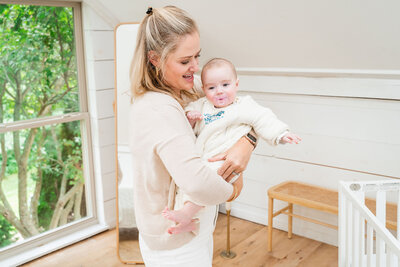










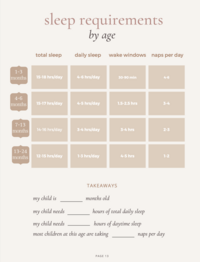
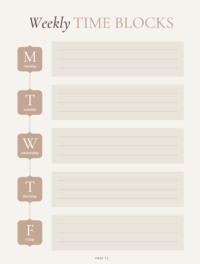
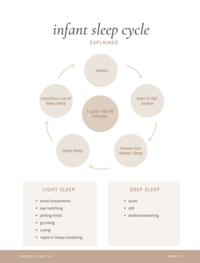



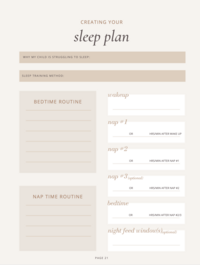

Read the Comments +